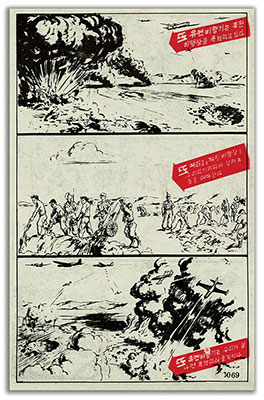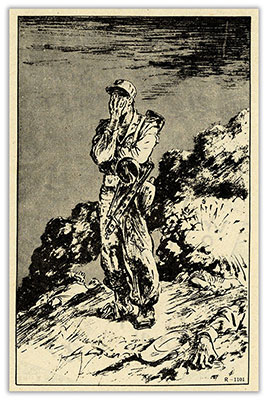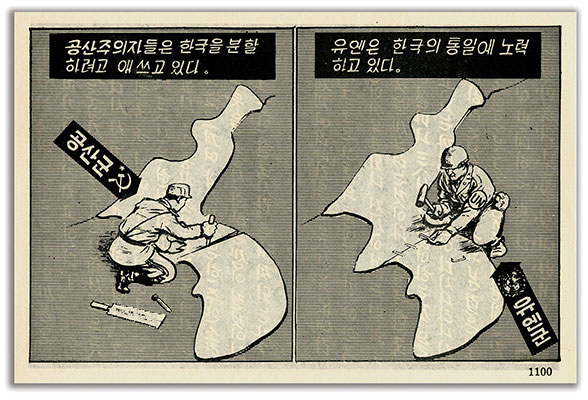DOWNLOAD
The Far East Air Forces Command (FEAF) conducted and was praised for its “humanitarian bombing campaign in Korea.”1 The Air Force Secretary publicly announced that key North Korean industrial, military, and infrastructure sites were bombed only after the civilian populace had been forewarned by airdropped leaflets and radio broadcasts.
UN humanitarian bomb raid warnings allowed the expansion of the Psywar leaflet and radio themes beyond the threat of artillery and naval gunfire barrages. While the art staff worked on leaflet designs, the 3rd Reproduction Company, operating in the FECOM Publication Center facilities in Motosumiyoshi (between Yokohama and Tokyo), made the lithographic plates and mass printed leaflets on Webendorfer Offset and Harris LTV Stream-Fed presses.2
Then, they were packaged in door bundles for C-47 Skytrain delivery in Korea or loaded as rolls into M129E1/E2 500 lb. leaflet bombs for B-29 squadrons stationed in Japan and B-26 Invader elements on the peninsula. Teletype messages to the 4th Mobile Radio Broadcasting Company (MRBC) stations in Korea contained dates, times, and sites of the FEAF bombing targets. In conjunction with this the U.S. Army radio officers at each KBS station were responsible for writing and then broadcasting humanitarian bomb warnings an hour before the air attacks were scheduled.



